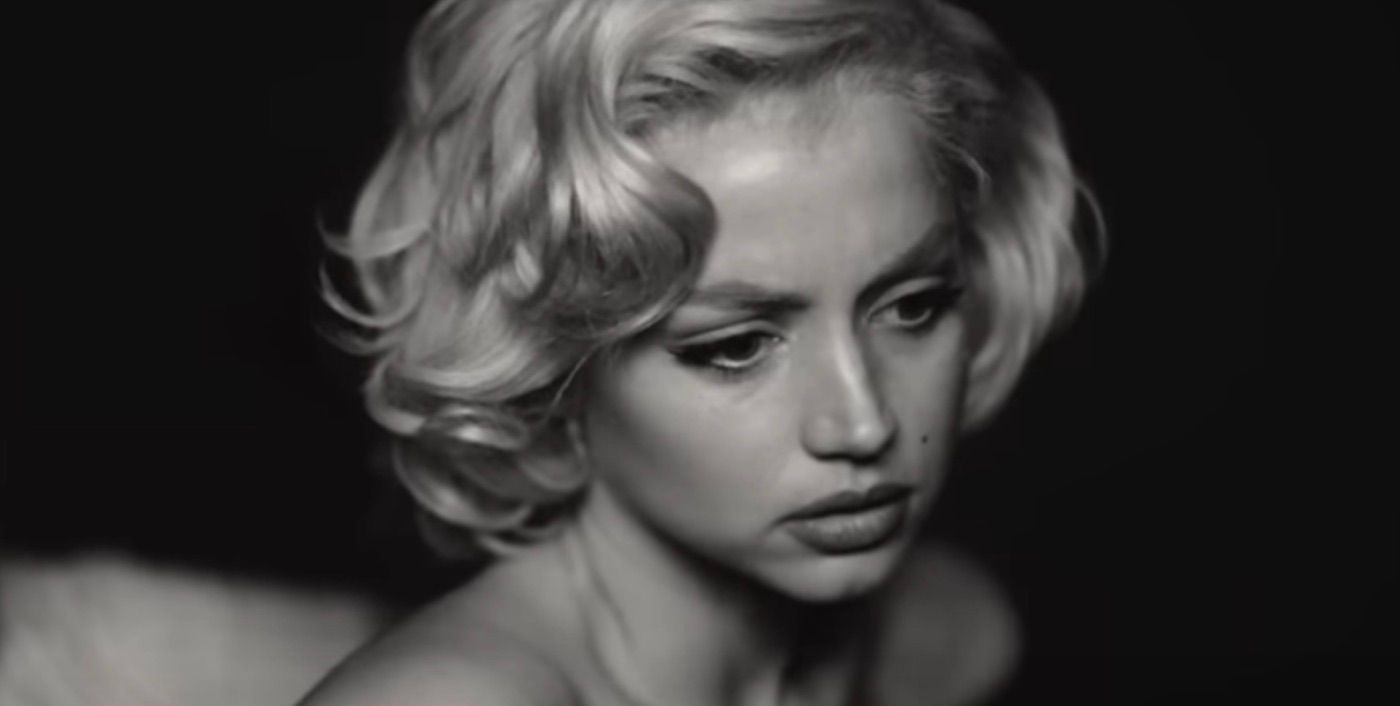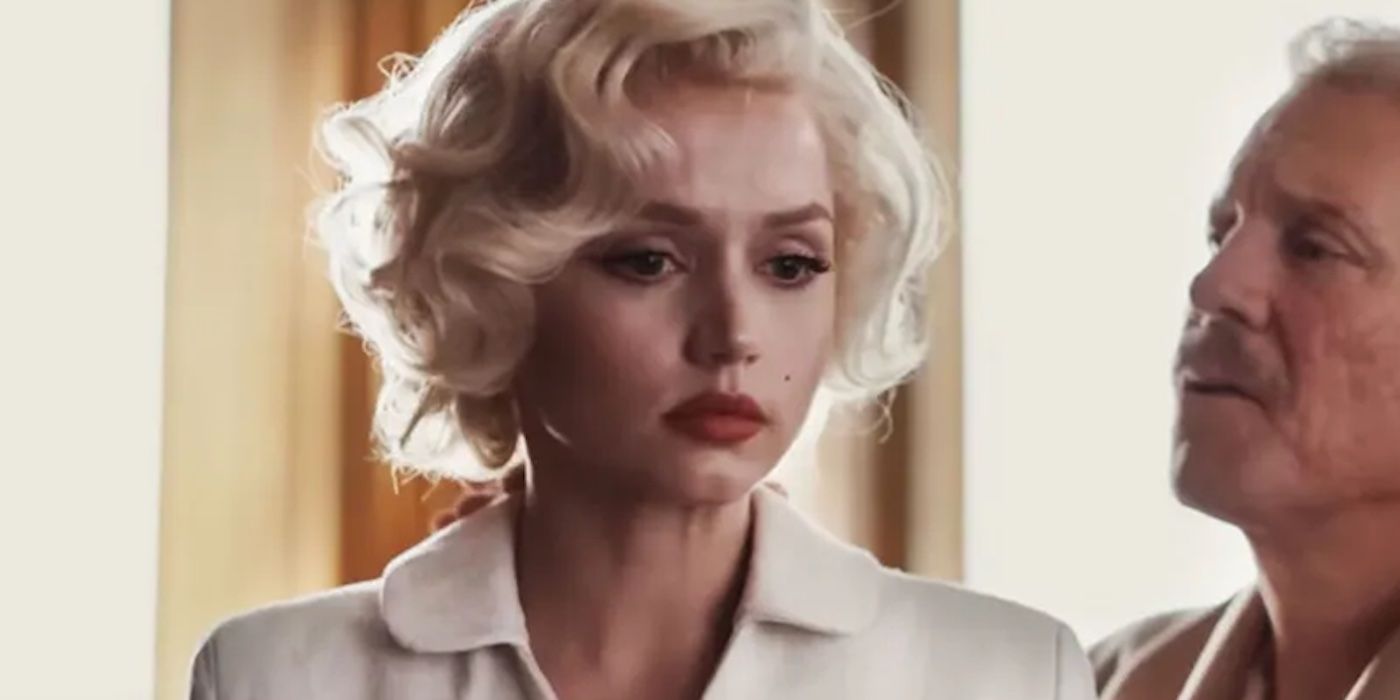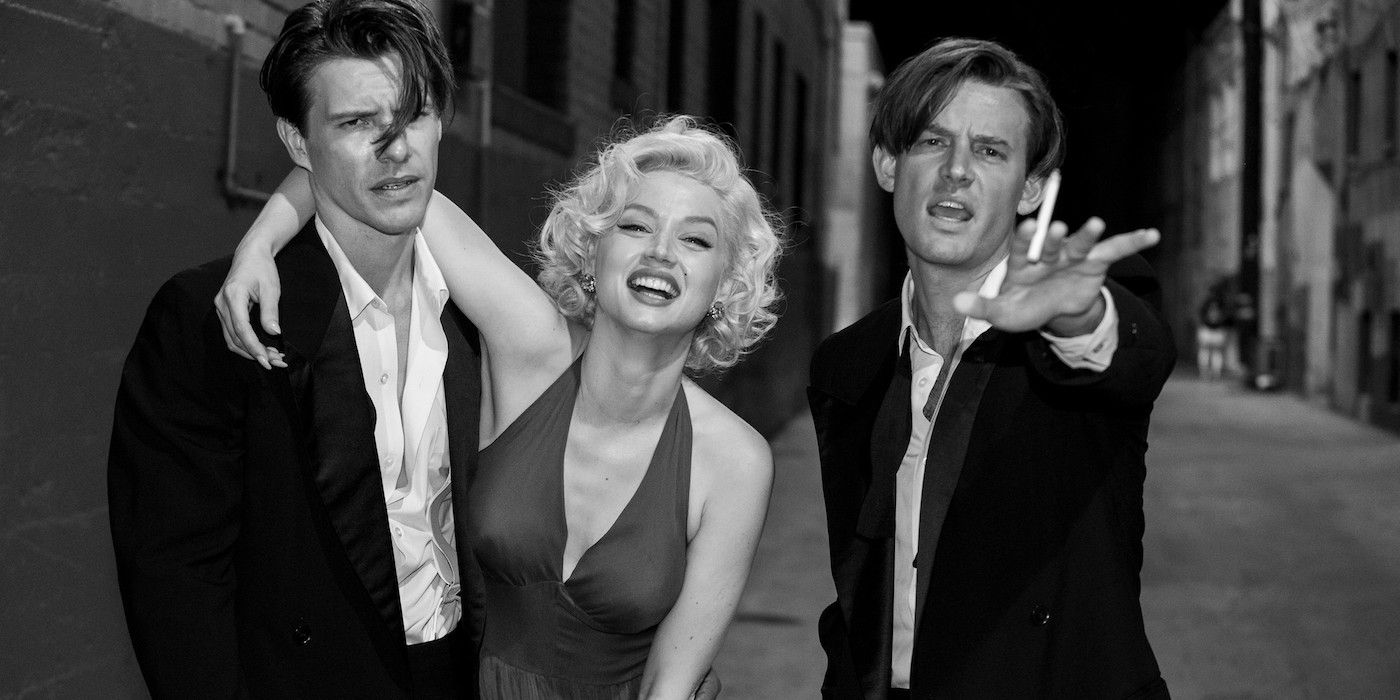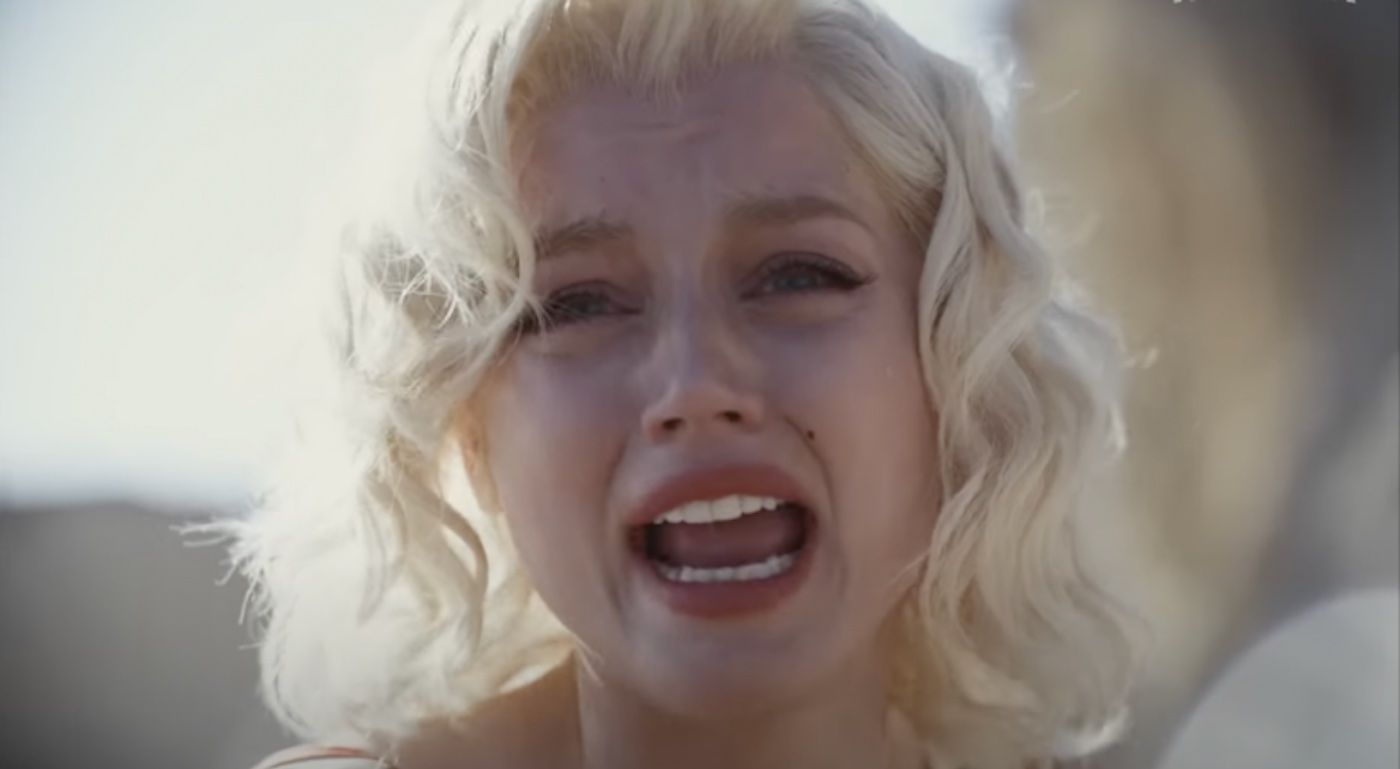Andrew Dominik’s Blonde is a powder keg of a movie; it is beautiful, mesmerizing, contemptuous, distressing, and extremely volatile. A glass box of walls closing in, with Hollywood as a fiery hellscape of commodification. Perhaps most importantly, Blonde is not a biopic of Marilyn Monroe but a faithful adaptation of author Joyce Carol Oates’ fictionalization of Monroe’s life as Norma Jeane. Though it dives into the inner life of one of the most famous women to ever live, the closer we get to her, the more encased and unsolvable she becomes. Identifiable moments and relationships in her career are shown, but this is the story of a dual persona. When the human front (Norma Jeane) gets abused, her mind lets its public artifice (Marilyn Monroe) take over — until that’s all that’s left.
Though Blonde isn’t a biopic, it does go from cradle to grave. We are introduced to a young Norma Jeane during her mother’s (Julianne Nicholson) mental breakdown. She speaks of Norma Jeane’s cradle being a drawer in the dresser and speaks of Norma Jeane’s father as being a man too important in Tinseltown to speak his name aloud. In one of Dominik’s many mindscape segues, a fire in the Hollywood hills sprinkles embers and ash into their shoddy apartment. Throughout Blonde, the surroundings always puncture Norma Jeane’s world. Her mother tells her that during a tremor she can’t identify as in the earth or in her body, “in California, you can’t tell if it’s real or just yourself.” This line about her mother’s mental illness will, of course, also come to describe celebrity skin.
After being placed in an orphanage and never learning the identity of her father, Norma Jeane (Ana de Armas) questions so much about herself that she’s never able to form a foundational identity beyond what is asked of her stage persona, Marilyn Monroe. She is fractured, first through her mother’s mental illness and absent father, into who others want her to be versus who she wants to be. Gawking men and the tabloids want her to be a sexpot and she wants to do Checkhov. Hollywood wants the former. Even her acting class has her nude pinup as the calendar on their bulletin board. Blonde is a collage of Monroe’s career juxtaposed with Norma Jeane’s desire to keep a part of herself maintained. Time moves through some of the men she marries and the unborn babies she loses, which are shown as fetuses that she communicates with. Most of her shown experiences are funneled through trauma that befalls her after granting trust to another (generally in a quest for “daddy”). Although the story of Blonde is sequential, it’s primarily a chronicle of the use of her body, from pinup to pinned down by the President of the United States of America.
Blonde is a conveyer belt of trauma. There is rape and physical abuse, both done in an attempt to control her career. And eventually, Hollywood prescribes doses of drugs to push her through depression into constant performance. It is a chronicle of a splintered self that, through grief, gives all ownership of her image to an outsourced legend; a ghost wrapped up in flesh, with so many expectations still placed upon it—even long after she’s gone.
During the first time we see Norma Jeane in an acting class, her instructor describes acting as keeping yourself and the character you play separate (“You’re here and your part is here!”). Blonde presents that that is how Norma Jeane lived with Marilyn Monroe until her misery on the set of Some Like it Hot was so pronounced that she granted that persona a final takeover. In the saddest scene in the film, and there are many, her makeup artist (Toby Huss) repeats “she’s coming, she’s almost here” as he turns Norma Jeane into Monroe as though that transformation will make her well. It will keep everyone paid, but it is destroying her. It’s the upkeep of that persona that sends her mind into a haze and her body into a limp slouch. At the peak of her stardom, she is carried like a commodity from another person’s fantasy to another. It is damnation, not salvation.
The descriptions above probably sound like an endurance test. Dominik asks a lot of the audience and if you give yourself over, you can be completely enveloped. Swallowed whole into the belly of the beast. It is the type of movie that runs the viewer through such an intense ringer that I can understand everyone who hates it, just as much as I will nod with those who think it’s a beguiling experience. For me, I spent three hours in awe of how in control of his craft Dominik is, and how trusting de Armas is with him. de Armas evokes the known breathless voice of Marilyn Monroe but uses her more natural range as Norma Jeane, a choice that helps the thesis overall of when the character is being played and when it is not. What we can know for sure (the iconic moments and performances) and what is filled in with imagination.
Aesthetically, Blonde is mesmerizing. Mixing aspect ratios, going handheld in unexpected moments, and utilizing stars, sperm, waterfalls, and flying saucers as segues — Blonde is unrelentingly evocative. At one point, Monroe even vomits on the camera itself. Dominik is holding the Hollywood and tabloid machine in contempt but not without letting the audience know their role in iconography, too. There is a sense that no human being could ever become that large in our cultural consciousness and remain an individual person. Both the editing (by Adam Robinson) and the score (by Nick Cave and Warren Ellis) match Dominik’s style: sometimes fluttery, sometimes destructive.
The reason why Blonde will stick with me, though, is because—despite all the ugliness—Dominik stays empathetic with Norma Jeane. Though the nudity might be excessive, it’s mostly in lounging moments, not posed moments. It’s only in these moments that her body has a relaxed freedom. Her dressers tighten her dresses, her makeup artist puts on her known face to save face, and doctors literally peer into her—all at the behest of powerful men who need a movie made or the most powerful man in the free world whose philandering has created a crisis of image. Even the playwright Arthur Miller (Adrien Brody), by far the best man she encounters in Blonde, starts with a dismissal of her due to the misconception he has of her that has been pumped out by the iconography machine: that she cannot have a brain.
While Blonde almost exclusively shows all the horrible things that happened to Marilyn Monroe, it does so in defense of her. It may seem like the film makes all its points early and then just subjects you to them. But to me, the most fascinating part of Blonde is the shift from the ability to maintain split personas to the loss of self; sedated, devoid, but still isolated in amber and granted immortality through cultural consciousness.
I left Blonde feeling like my brain had been rattled, my nerves had been rewired, and like I’d been left beaten in an alley, without knowing how I ended up there. There might be a few too many body blows (including having its own “Rosebud”) but it’s the constant pummeling that keeps her unknowable despite all the images we’ve committed to memory. One area that I desired to critique throughout the runtime—a quest for a father’s love is something routine in biopics—even that thread resolves itself with a bleak conclusion: that nothing about Marilyn is truly knowable, and she was constantly manipulated or in service of the fantasies of others. And while none of this sounds enjoyable, there were many filmmaking moments that exhilarated me.
It is the most shocking body horror movie of the year. This is a portrait of an icon that is done precisely in the way that she decries filmmaking: by taking what she’s given as a single piece of a jigsaw puzzle—that someone else puts together. The question about whether what Dominik, Oates, and de Armas put together is worthwhile is knowingly in the same feedback loop that it decries. It’s exploitative and empathetic. That’s why it feels like it spits you out in an alley to pick yourself back up. Blonde is an alienating movie. To me, that makes it a disarming and effective experience.
Grade: A-
Blonde is now available to stream on Netflix.




